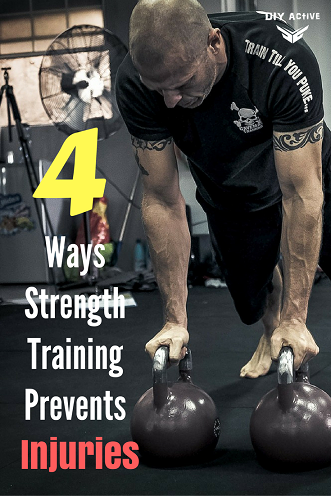
How to Prevent Injuries in Strength Training
admin
- 0
Strength training is a fantastic way to improve fitness, build muscles, and enhance overall health. However, like any physical activity, it carries a risk of injury. In order to make the most out of your strength training routine while ensuring safety, it is important to follow certain guidelines and precautions. This article aims to provide you with valuable tips and advice on how to prevent injuries during strength training sessions.
Warm Up Properly
Before diving into heavy lifting or intense workouts, it is crucial to warm up properly. Warming up helps increase blood flow, improve joint mobility, and prepare the muscles for the upcoming exercise. Incorporate dynamic stretches, such as lunges, arm circles, and leg swings, to warm up your entire body. Spend around 10-15 minutes on a comprehensive warm-up routine to lower the risk of straining your muscles or injuring your joints.
Use Correct Form
Using the correct form during strength training exercises is vital for injury prevention. Poor technique not only reduces the effectiveness of the exercise but also increases the likelihood of strains, sprains, and other injuries. Take the time to learn the proper technique for each exercise you perform. Focus on the alignment of your body, breathing patterns, and maintaining control throughout each movement. Consulting a fitness professional or trainer can be beneficial in ensuring you are using the correct form.
Progress Gradually
One common mistake many individuals make when starting strength training is aiming for heavyweights or high-intensity workouts right off the bat. It is essential to progress gradually to allow your body to adapt and avoid overexertion. Increase the weight or intensity of your exercises in small increments with each session. This gradual progression gives your muscles, tendons, and ligaments time to adjust and become stronger, reducing the risk of injuries.
Listen to Your Body
While pushing yourself during workouts is important, it is equally crucial to listen to your body. If you experience pain, discomfort, or any unusual sensations, pay attention to them. Pain can be your body’s way of signaling that something is wrong, and ignoring it may lead to further injury. Take rest days when needed and allow your body to recover. If you are unsure about the severity of any discomfort, consult a healthcare professional or a sports therapist to avoid aggravating the issue.
Vary Your Routine
Repeating the same exercises and routines day after day can put excessive stress on certain muscle groups, leading to overuse injuries. To prevent such injuries, it is crucial to vary your strength training routine. Incorporate different exercises, target different muscle groups, and mix up the order of your exercises periodically. This not only helps prevent overuse injuries but also keeps your workouts engaging and enjoyable.
Take Rest and Recovery Seriously
Rest and recovery are essential aspects of any strength training program. Allowing your body sufficient time to rest and recover between intense workouts is vital for injury prevention. Overtraining can lead to fatigue, decreased performance, and an increased risk of injuries. Schedule regular rest days and prioritize sleep to give your body the time it needs to repair and rebuild muscle tissue. Additionally, consider incorporating activities such as yoga or stretching into your routine to aid in recovery.
Stay Hydrated and Fuel Your Body
Proper hydration and nutrition play a crucial role in injury prevention, especially during intense exercise. Dehydration can negatively impact your performance, reduce your ability to focus, and increase the chance of muscle cramps or strains. Drink water before, during, and after your strength training sessions to stay hydrated. Additionally, ensure you are consuming a balanced diet rich in protein, carbohydrates, and healthy fats to provide your body with the necessary fuel to perform optimally and recover effectively.
Conclusion
Preventing injuries in strength training requires a combination of adequate preparation, technique, progression, and self-awareness. By following the guidelines outlined in this article, you can greatly reduce the risk of injuries and make the most out of your strength training routine. Always prioritize safety and listen to your body to ensure a long and successful journey towards improved strength and fitness.

